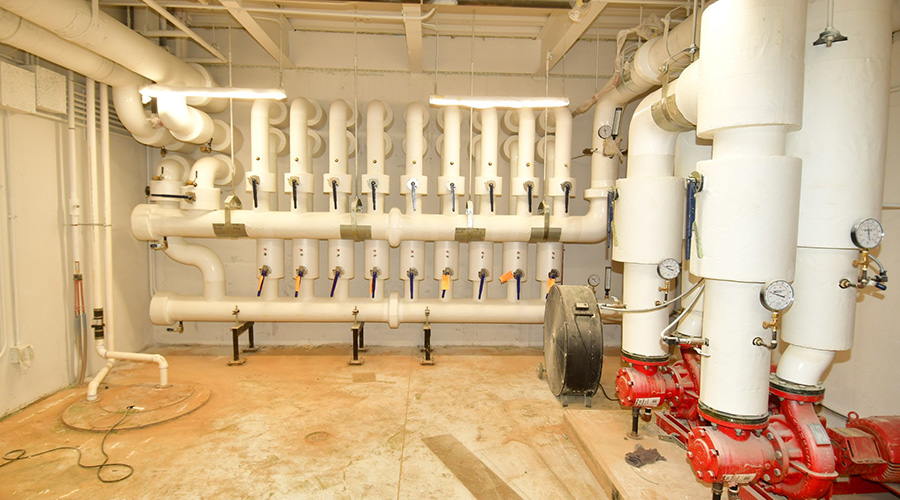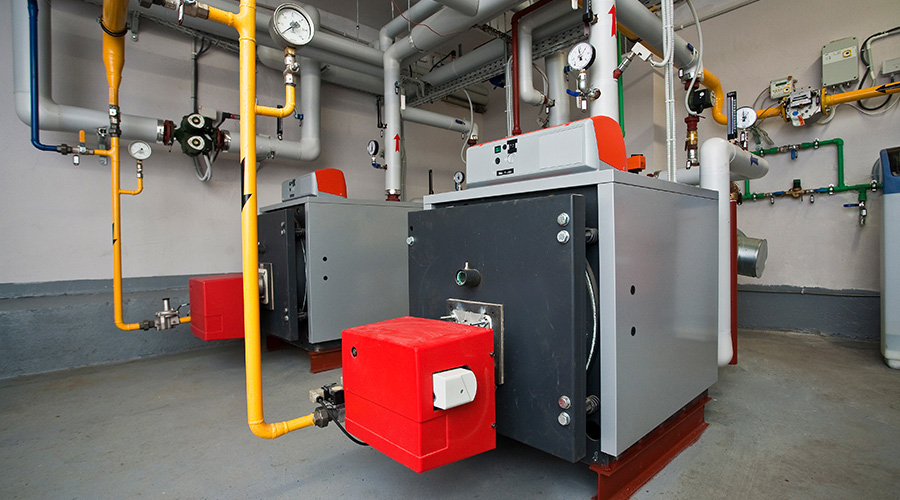Chillers: Examine Life-Cycle Costs
When managers begin investigating whether to replace or repair a chiller, the first step is to compile the life-cycle cost of a new system and compare this figure to the cost of continuing to operate an existing unit. Simply comparing raw energy savings to initial cost typically will not yield an attractive payback period, unless the existing systems are very old and inefficient. To fully justify the installation of a new system, managers must include several key factors in the cost analysis:
Total installed cost. The total installed cost of new equipment can be high and difficult to justify. Managers must include associated peripheral costs, such as new electrical rough-in, concrete and site work, and demolition. Generally, the initial equipment cost represents only about 5-10 percent of the total life-cycle cost of chilled-water plants.
Reliability. Reliability means risk and probably is the most pressing reason to replace existing machines. It also is the most difficult factor to translate into cost. Managers can start by comparing the history of repair costs and downtime and projecting these figures to future repairs and outages. This process also should take into account the effect of increased reliability on equipment tied to the chilled-water system, such as air handlers serving critical spaces.
Increased performance. Facilities often change in size and functionality, resulting in fluctuating utility requirements. Managers might need to consider the purchase of additional chiller-plant capacity, lower supply-water temperatures, or increased overall system flow as part of the repair-or-replace evaluation. The requirements for maintaining space humidity, which depends on the temperature of the chilled-water supply, or other process requirements can quickly justify the need to install new central-plant equipment well before a payback period does.
Energy costs. The energy efficiency of new machines can be a key justification for making a large up-front investment. To get an idea of the variations in energy costs, managers can calculate the wire-to-water ratio by recording the existing chiller power use in kilowatts (kW) versus delivered tonnage at full load. Modern water-cooled chillers can operate at wire-to-water ratios as low as 0.5 kW per ton (kW/ton).
Compared to an existing chiller of the same tonnage operating at 0.7 kW/ton, a new chiller can reduce energy use by almost 30 percent at full load. Energy savings during part-load conditions can be more than 50 percent when comparing new variable-speed chillers to existing constant-speed machines.
Managers can find a similar energy-cost reduction for cooling-tower replacements, but with a double effect. Not only will new, efficient tower-fan motors with variable-frequency drives (VFDs) reduce energy use, but the lower temperature of tower water supplied to the chiller’s condenser also increases chiller efficiency.
Related Topics:














